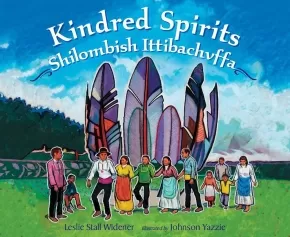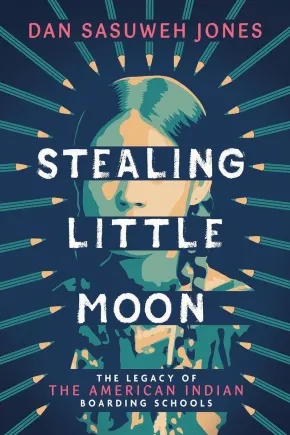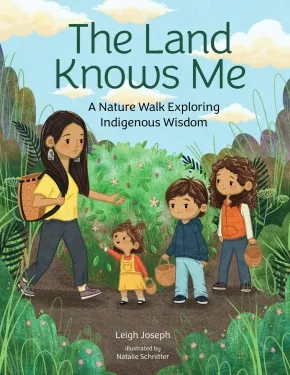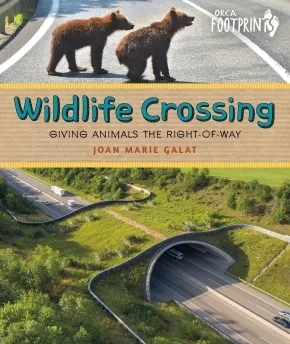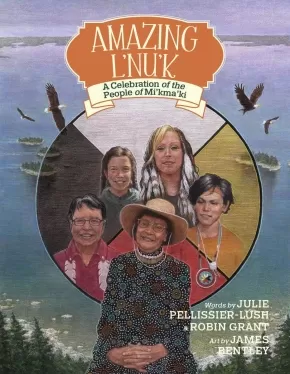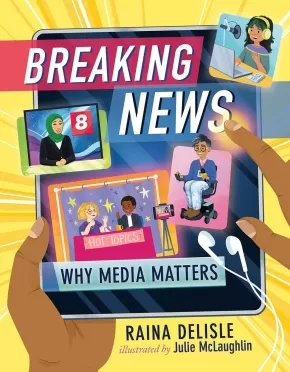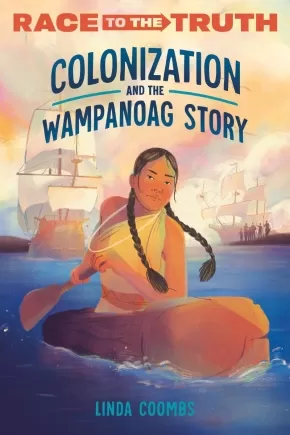
Information Circles
31
-
45
of
192 Results;
Sort By
Go To
of 13
Kindred Spirits: Shilombish Ittibachvffa
$21.99
Artists:
Format:
Hardcover
Text Content Territories:
Indigenous American; Native American; Choctaw; Hopi; Navajo (Diné);
ISBN / Barcode: 9781623543969
Synopsis:
Synopsis:
Those who feel the same are kindred spirits.
A nonfiction picture book about the inspiring true pay-it-forward story that bridges two continents, 175 years, and two events in history--connecting Ireland, Choctaw Nation, Navajo Nation, and the Hopi Tribe.
1845. The Potato Famine devastated Ireland. An ocean away, Choctaw people heard and were moved by the similarities to the injustice they had suffered on the Trail of Tears. Though they had little, they gathered money to donate.
2017. Irish people built a statue to remember their connection to the Choctaw Nation--twenty-foot high feathers in the shape of a bowl.
2020. COVID-19 disproportionately ravished the Navajo Nation and the Hopi Tribe. Irish people remembered the Choctaws' kindness and paid it forward by donating.
Empathy creates kindness that lives well beyond a single act and includes more people the bigger it grows.
Educator Information
Recommended for ages 5 to 8.
Additional Information
32 pages | 11.00" x 9.00" | Hardcover
Little By Little: You Can Change the World
$22.95
Artists:
Format:
Paperback
Text Content Territories:
Indigenous Canadian; First Nations; Cree (Nehiyawak); Swampy Cree ; Shamattawa First Nation;
ISBN / Barcode: 9781774920985
Synopsis:
Synopsis:
The inspiring true story of how Indigenous activist Michael Redhead Champagne found his voice to create change in his community.
Michael might be young, but he’s got a big heart and a strong sense of right and wrong. He knows it’s right to help people when they need it—but what can he do when so many people need help?
When Michael finds out about an upcoming youth conference, he sees his chance. But when he gets to the conference, he’s the youngest person there! And the speaker on stage is saying things about his community that aren’t true. Will Michael be brave enough to use his voice to stand up for what he knows is right?
Little By Little is a beautifully illustrated graphic novel about how one person can spark change and inspire others.
Awards
- 2025 Forest of Reading
Reviews
“A gentle, uplifting, and inspiring story about a gentle, uplifting, and inspiring person. In this little book, Michael teaches us and our future generations that anyone can be a change-maker by using their voice.” — Rosanna Deerchild, poet and CBC Radio host
"Here’s a touching story about Michael Redhead Champagne that will inspire children to help others, even in the simplest of ways." - Debra H., Elementary School Teacher, Indigenous Books for Schools
Educator Information
Recommended for ages 9 to 12.
Fountas & Pinnell T
Lexile Framework for Reading HL560L
Recommended in the Indigenous Books for Schools catalogue as being useful for grades 4 to 6 for Career Education, English Language Arts, and Social Studies.
Themes: Community, Diversity and Inclusion, Relationships, Respect, and Social Justice
Additional Information
56 pages | 6.50" x 10.00" | Paperback
Making Rope Out of Bearded Sealskin
$15.95
Artists:
Format:
Paperback
Text Content Territories:
Indigenous Canadian; Inuit;
ISBN / Barcode: 9781774507971
Synopsis:
Synopsis:
Learn all about the process of making rope from bearded seal skin! Rope is a very useful tool and is used by Inuit for many things. From removing the blubber to hanging the rope to dry, this introductory guide takes readers through a step-by-step process for making rope from bearded seal skin.
Educator Information
Recommended for ages 6 to 8.
Making Rope Out of Bearded Sealskin gives simple, step-by-step instructions on how to make rope out of bearded sealskin and describes other things Inuit make out of sealskin.
Additional Information
24 pages | 8.00" x 10.00" | Paperback
Stealing Little Moon: The Legacy of the American Indian Boarding Schools
$26.99
Format:
Hardcover
Text Content Territories:
Indigenous American; Native American; Ponca; Ponca Tribe of Indians of Oklahoma ;
ISBN / Barcode: 9781338889475
Synopsis:
Synopsis:
"Stealing Little Moon is both a moving family saga and an expertly told true story that all Americans should know." —Steve Sheinkin, New York Times bestselling author of Bomb and Undefeated
Little Moon There Are No Stars Tonight was four years old when armed federal agents showed up at her home and took her from her family. Under the authority of the government, she was sent away to a boarding school specifically created to strip her of her Ponca culture and teach her the ways of white society. Little Moon was one of thousands of Indigenous children forced to attend these schools across America and give up everything they'd ever known: family, friends, toys, clothing, food, customs, even their language. She would be the first of four generations of her family who would go to the Chilocco Indian Agricultural School.
Dan SaSuWeh Jones chronicles his family's time at Chilocco--starting with his grandmother Little Moon's arrival when the school first opened and ending with him working on the maintenance crew when the school shut down nearly one hundred years later. Together with the voices of students from other schools, both those who died and those who survived, Dan brings to light the lasting legacy of the boarding school era.
Part American history, part family history, Stealing Little Moon is a powerful look at the miseducation and the mistreatment of Indigenous kids, while celebrating their strength, resiliency, and courage--and the ultimate failure of the United States government to erase them.
Educator Information
Recommended for ages 9 to 12.
Additional Information
304 pages | 5.50" x 8.25" | Hardcover
The Cherokee Syllabary: An Illustrated Key to the Cherokee Language
$21.95
Artists:
Format:
Hardcover
Text Content Territories:
Indigenous American; Native American; Cherokee;
ISBN / Barcode: 9781570674228
Synopsis:
Synopsis:
The Cherokee Syllabary: An Illustrated Key to the Cherokee Language reintroduces adults as well as children to their language once again. The introduction and pronunciation key aid in understanding the beautifully illustrated syllabary characters. Accompanying each illustration is a Cherokee word that contains the Cherokee syllabary character, the Cherokee sounds of each syllabary character in the word, the word in English and a row of syllabary characters with sound of each below. Young children will be enchanted by the delightful illustrations. The concept for the illustrations was influenced by medieval illuminated manuscripts. The book is a valuable educational resource for schools and libraries that adds multicultural diversity to their classrooms and collections.
Educator Information
Recommended for ages 6 to 8, but anyone learning the Cherokee language could find this useful.
Includes an Understanding the Text page, nothing that the Cherokee alphabet isn't an alphabet but a syllabary (each Cherokee character represents a complete syllable) and explaining more about the information in the book.
Additional Information
40 pages | 8.50" x 8.50" | Hardcover
The Land Knows Me: A Nature Walk Exploring Indigenous Wisdom
$25.99
Artists:
Format:
Hardcover
Text Content Territories:
Indigenous Canadian; First Nations; Salish; Coast Salish; Squamish;
ISBN / Barcode: 9780760392911
Synopsis:
Synopsis:
Through the Squamish language and cultural traditions, learn about Indigenous plant relationships and how we are all connected to nature through plant-based foods, medicines, and materials.
The best way to learn about plants is through observing and interacting with living examples. Join Held by the Land author Leigh Joseph and her children in The Land Knows Me, an educational, hands-on journey to discover all the wonderful uses and gifts of the plants around us. Through the Indigenous traditions of Squamish culture you’ll learn how to ground yourself on the land, how to introduce yourself in the Squamish language to your plant relatives, and the many teachings about plants, cultural stories, and learnings related to the flora seen on your walk.
This essential and colorful introduction to Indigenous plant knowledge includes informative sidebars, reflection questions, and plant names in both Squamish and English so children can learn a new language.
The Land Knows Me concludes with a 15 plant profile directory featuring detailed plant illustrations and kid-friendly botanical drawings to aid in learning about the many great uses for plants and the native history behind them. You’ll meet plants like:
- Ḵwiĺayus (kw-ill-eye-os), Red-Flowering Currant, Ribes sanguineum
- Ḵ’emeláý (k-em-ill-eye), Bigleaf Maple, Acer macrophyllum
- Séliýaý (s-elle-ee-eye), Oregon Grape, Mahonia nervosa
- Xápaýay (hey-pie-eye), Western Red Cedar, Thuja plicata
- Ḵwe7úpaý (kw-oh-pa-eye), Pacific Crabapple, Malus fusca
- And more!
The directory also includes important safety and proper harvesting information for parents who are looking for more opportunities to educate and engage with kids while getting to know the secrets of the land around us. Including mindfulness activities, how-to crafts, and yummy treats, The Land Knows Me calls you back again and again to learn something new with each engaging read!
Follow the stream, cross the field, and step into a forest full of rich, botanical diversity rooted in history and tradition.
Educator Information
Recommended for ages 6 to 8.
Additional Information
80 pages | 8.50" x 11.00" | Hardcover
The Seventh Direction Teacher Lesson Plan
$7.99
Artists:
Text Content Territories:
Indigenous American; Native American; Sioux; Lakota; Indigenous Canadian; First Nations; Sioux; Lakota;
ISBN / Barcode: 9781778540325
Synopsis:
Synopsis:
A teacher lesson plan that accompanies the book, The Seventh Direction. Includes comprehension questions, group activities, colouring pages, and more. In this enlightening legend shared by Lakota Elder Kevin Locke, Wakhan Thanka (The Great Spirit) created the entire world in seven days; leaving the most precious creation for last. In order to protect this precious creation, Wakhan Thanka needed to hide it where it would always be safe and turned to our animal relatives for help. Together, they found the perfect place. Do you know where they chose?
Educator Information
This lesson plan accompanies the book The Seventh Direction: A Legend of Creation.
This lesson plan is available in French: La septième direction Plan de cours
Additional Information
12 pages | 8.75" x 11.00" | Paper Packet
The Seventh Direction: A Legend of Creation
$20.99
Artists:
Format:
Hardcover
Text Content Territories:
Indigenous American; Native American; Sioux; Lakota; Indigenous Canadian; First Nations; Sioux; Lakota;
ISBN / Barcode: 9781778540134
Synopsis:
Synopsis:
In this enlightening legend shared by Lakota Elder Kevin Locke, Wakhan Thanka (The Great Spirit) created the entire world in seven days; leaving the most precious creation for last. In order to protect this precious creation, Wakhan Thanka needed to hide it where it would always be safe and turned to our animal relatives for help. Together, they found the perfect place. Do you know where they chose?
Awards
- Gold IPPA Book Award Winner (First Nations/Indigenous Communities category)
Reviews
"Fully immersive and thought-provoking, Locke's sage picture book will appeal to visionary younger readers who can grasp the teaching that humans must rediscover their link to the natural world, to "be a good relative, not just to the two-leggeds, but to all of creation" - a timely message." - Publishers Weekly
"...full of vivid color and imagery. A stirring tale of creation that will capture readers' attention. A good purchase for picture book collections." - School Library Journal Reviews (March 2024)
Educator Information
Recommended for ages 6 to 8.
A teacher lesson plan is available for this book: The Seventh Direction Teacher Lesson Plan.
This book is available in French: La septième direction: une légende de la création
Additional Information
44 pages | 8.76" x 11.03" | Hardcover
Walking Together (PB)
$12.99
Format:
Paperback
Text Content Territories:
Indigenous Canadian; First Nations; Mi'kmaq;
ISBN / Barcode: 9781773217772
Synopsis:
Synopsis:
This bestselling, innovative picture book introduces readers to the concept of Etuaptmumk—or Two-Eyed Seeing, the gift of multiple perspectives in the Mi’kmaw language—as we follow a group of young children connecting to nature as their teacher.
A poetic, joyful celebration of the Lands and Waters as spring unfolds: we watch for Robin's return, listen for Frog's croaking, and wonder at maple tree's gift of sap. Grounded in Etuaptmumk, also known as Two-Eyed Seeing—which braids together the strengths of Indigenous and non-Indigenous ways of knowing—and the Mi’kmaq concept of Netukulimk—meaning to protect Mother Earth for the ancestors, present, and future generations—Walking Together nurtures respectful, reciprocal, responsible relationships with the Land and Water, plant-life, animals and other-than-human beings for the benefit of all.
Reviews
"Walking Together is a poetic celebration grounded in Etuaptmumk (Two-Eyed Seeing) that weaves together the strengths of Indigenous and non-Indigenous ways of knowing. The story explores respectful, reciprocal, responsible relationships between the land, water, plants, animals, and humans." - The Dalai Lama Center
Educator Information
Recommended for ages 4 to 7.
Introduces the concept of Two-Eyed Seeing (the gift of multiple perspectives) to young readers.
This book is available in a bilingual format: Walking Together / Menaqaj Pemwije’tulti’k
Additional Information
36 pages | 8.90" x 8.90" | Paperback
Wildlife Crossing: Giving Animals the Right-of-Way
$21.95
Format:
Hardcover
ISBN / Barcode: 9781459833463
Synopsis:
Synopsis:
What happens when the needs of people and nature collide?
More than 13 million miles of roads crisscross landscapes in 222 countries. Roads offer many human benefits, but they also create problems for nature. Their construction leads to a loss of biodiversity through habitat loss, fragmentation and degradation. Roads isolate wildlife populations, impede migration and allow invasive plant and animal species to spread, while giving rise to pollution from garbage, light, noise and airborne contaminants. With innovative tools, like wildlife overpasses to reconnect landscapes, smart roads and vehicles to maximize safety, and a little hands on help, we can create environmental harmony. And sitting in the passenger seat, young people can play a part in helping highways and habitats coexist.
Reviews
“Well organized and includes clearly explained examples from many locations…This volume offers considerably more information for students researching the topic. An intriguing subject and a good resource for middle-grade reports.”— Booklist
“Gorgeous, crisp photographs complement the well-written text…A first purchase for libraries that need more books on the topic of conservation and the impact of development on wildlife.” — School Library Journal (SLJ)
“A fascinating, invaluable and enlightening tool for libraries, schools and homes alike. Wildlife Crossing will empower all readers to do their part when it comes to road ecology and will undoubtedly spark meaningful conversations about what it means to coexist with nature. Very highly recommended.”— Canadian Children's Book Centre (CCBC) Canadian Children’s Book News
“Wildlife Crossing gives an intriguing overview of the topic in just 48 pages, but it is a good addition to science collections with a focus on the environment. Highly Recommended.”— CM: Canadian Review of Materials
Educator & Series Information
Recommended for ages 9 to 12.
This book is part of the Orca Footprint series.
Reading Levels:
Fountas & Pinnell Text Level Gradient: X
Lexile measure: 1130L
Guided Reading Level: X
Additional Information
48 pages | 8.00" x 9.50" | Includes 74 colour photographs, 1 index, 1 bibliography | Hardcover
A Kids Book About Racism
$26.99
Format:
Hardcover
ISBN / Barcode: 9780744085679
Synopsis:
Synopsis:
A clear explanation of what racism is and how to recognize it when you see it.
As tough as it is to imagine, this book really does explore racism. But it does so in a way that’s accessible to kids. Inside, you’ll find a clear description of what racism is, how it makes people feel when they experience it, and how to spot it when it happens.
Covering themes of racism, sadness, bravery, and hate. This book is designed to help get the conversation going. Racism is one conversation that’s never too early to start, and this book was written to be an introduction on the topic for kids aged 5-9.
A Kids Book About Racism features:
- A friendly, approachable, and kid-appropriate tone throughout.
- Expressive font design; allowing kids to have the space to reflect and the freedom to imagine themselves in the words on the pages.
- An author who has lived experience on the topic of racism.
Tackling important discourse together!
Educator Information
Recommended for ages 5 to 9.
Additional Information
64 pages | 8.00" x 10.38" | Hardcover
Amazing L’nu’k: A Celebration of the People of Mi'kma'ki
$24.95
Artists:
Format:
Paperback
Text Content Territories:
Indigenous Canadian; First Nations; Mi'kmaq;
ISBN / Barcode: 9781774711682
Synopsis:
Synopsis:
Delve into the uplifting stories of the people of Mi'kma'ki in this full-colour illustrated book. Meet a devoted water protector, learn about a teen determined to shed light on the tragic history of Residential Schools, and discover poets who use words to explore and champion the rich Mi'kmaw culture. From Grand Chief Gabriele Sylliboy and Elder Dorene Bernard to Rebecca Thomas and Landyn Toney, all of these amazing people call Mi'kma'ki (a territory that includes New Brunswick, Prince Edward Island, Nova Scotia, and parts of Newfoundland, Quebec, and Maine) home.
With dozens of profiles featuring artists, athletes, entrepreneurs, scientists, and more — both historical and present-day, from kids to Elders — Julie Pellissier-Lush and Robin Grant celebrate the many brilliant achievements of the Mi'kmaq.
Includes original colour illustrations by James Bentley, informative sidebars, a map of Mi'kmaw territories, a history of Mi'kma'ki , an index, and a glossary.
Educator Information
Recommended for ages 8 to 12
Additional Information
184 pages | 7.00" x 9.00" | Paperback
Arctic Song: Creation Stories From the Arctic
$28.95
Artists:
Format:
Hardcover
Text Content Territories:
Indigenous Canadian; Inuit;
Reading Level: N/A
ISBN / Barcode: 9781772274974
Synopsis:
Synopsis:
This poetic journey through Inuit oral history gives a glimpse of traditional beliefs surrounding the creation of the world. From the creation of day and night and the Sun and the Moon, to the origin of Death, this collection of simple retellings is richly supported by the artwork of acclaimed artist Germaine Arnattaujuq.
Featuring a foreword by the artist about her work illustrating Inuit myths and legends, this introduction to traditional Inuit stories is based on the animated film Arctic Song, which was co-produced and co-directed by Germaine Arnattaujuq and Neil Christopher.
Educator Information
Dual-language: English and Inuktitut
Additional Information
72 pages | 9.00" x 10.00" | Hardcover
Breaking News: Why Media Matters
$26.95
Artists:
Format:
Hardcover
ISBN / Barcode: 9781459826564
Synopsis:
Synopsis:
The news can inform and inspire, but it can also misinform and mislead.
Becoming a savvy news consumer is more important than ever as people are spending an increasing amount of time on the internet and social media, where they're exposed to fake news and clickbait. And as major news events such as the COVID-19 pandemic have shown us, the global spread of misinformation and disinformation puts lives at risk and accurate and reliable information can save lives.
Breaking News: Why Media Matters helps kids become critical news consumers and teaches them how to tell fact from fiction. It explores the history of the media industry, the important roles the news plays today and the challenges it faces, and it gives kids the tools they need to find the news they can use.
Educator & Series Information
Recommended for ages 9 to 12.
This book is part of the Orca Think series.
A free, downloadable poster for this book is available: Breaking News: Why Media Matters Poster
Additional Information
96 pages | 7.00" x 9.00" | Hardcover
Colonization and the Wampanoag Story
$11.99
Format:
Paperback
Text Content Territories:
Indigenous American; Native American; Wampanoag (Wôpanâak);
ISBN / Barcode: 9780593480434
Synopsis:
Synopsis:
Until now, you've only heard one side of the story: the "discovery" of America told by Christopher Columbus, the Pilgrims, and the Colonists. Here's the true story of America from the Indigenous perspective.
When you think about the beginning of the American story, what comes to mind? Three ships in 1492, or perhaps buckled hats and shoes stepping off of the Mayflower, ready to start a new country. But the truth is, Christopher Columbus, the Pilgrims, and the Colonists didn't arrive to a vast, empty land ready to be developed. They arrived to find people and communities living in harmony with the land they had inhabited for thousands of years, and they quickly disrupted everything they saw.
From its "discovery" by Europeans to the first Thanksgiving, the story of America's earliest days has been carefully misrepresented. Told from the perspective of the New England Indigenous Nations that these outsiders found when they arrived, this is the true story of how America as we know it today began.
Reviews
"A poignant and powerful look at identity, change, and resiliency." —Kirkus Reviews
Educator Information
Recommended for ages 10+.
Additional Information
272 pages | 5.50" x 8.31" | Paperback
Sort By
Go To
of 13

